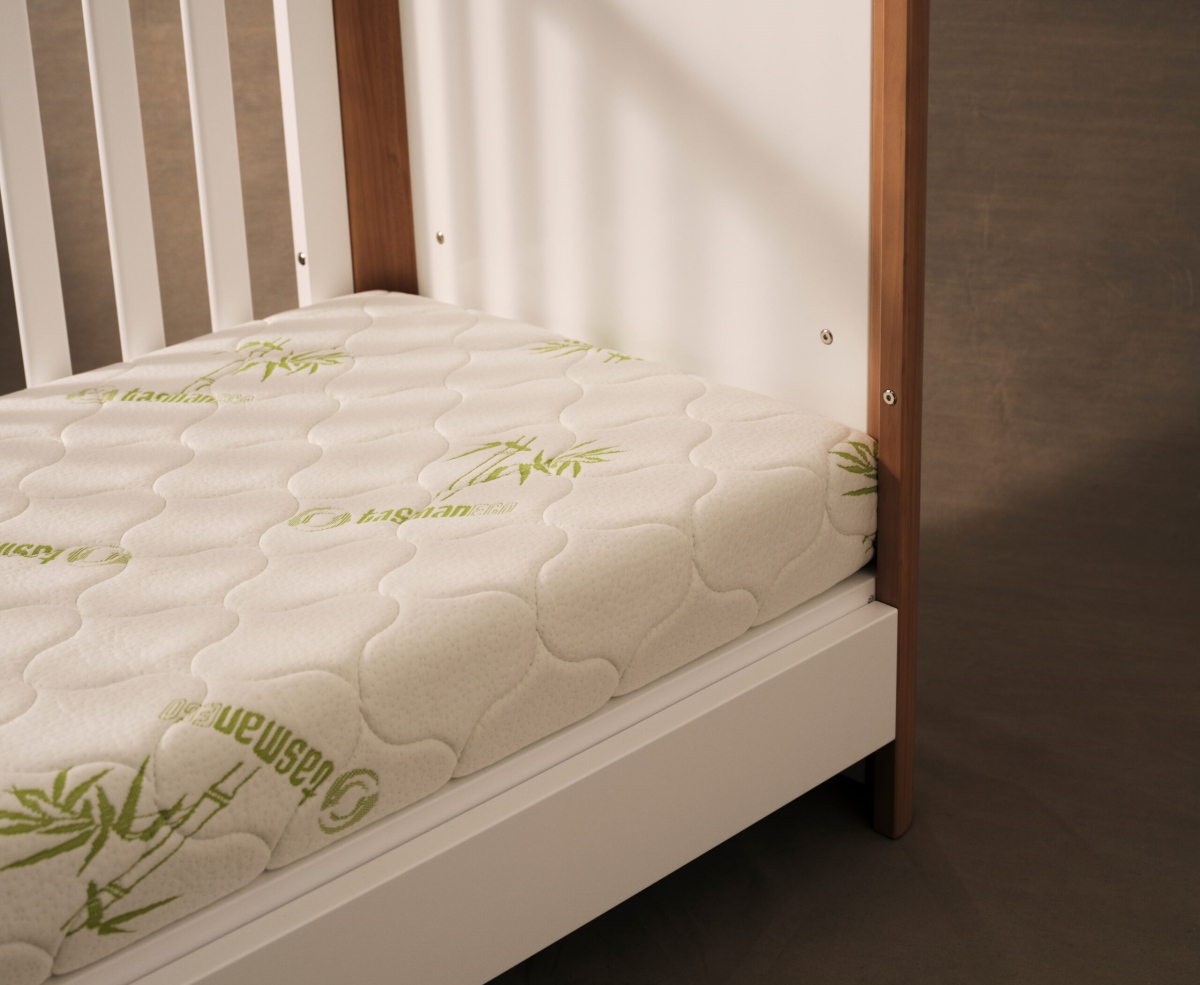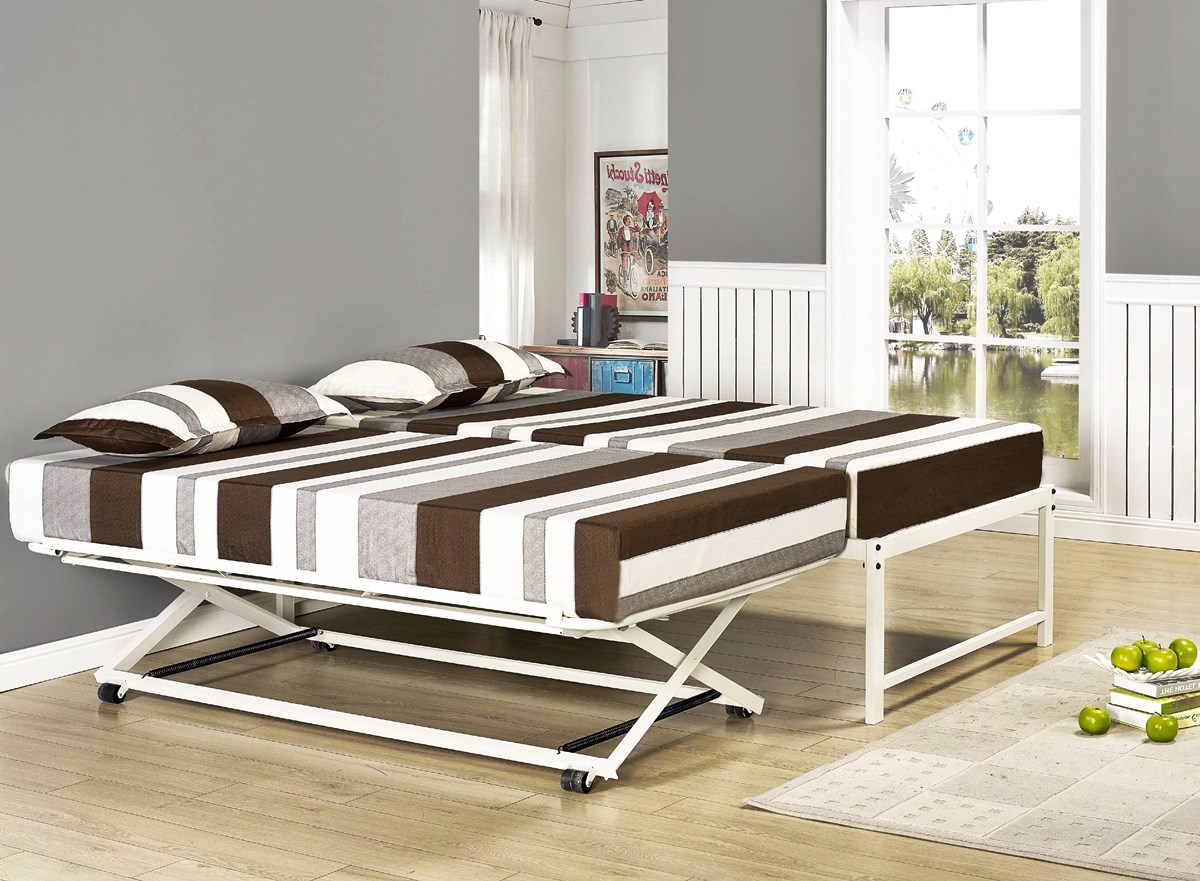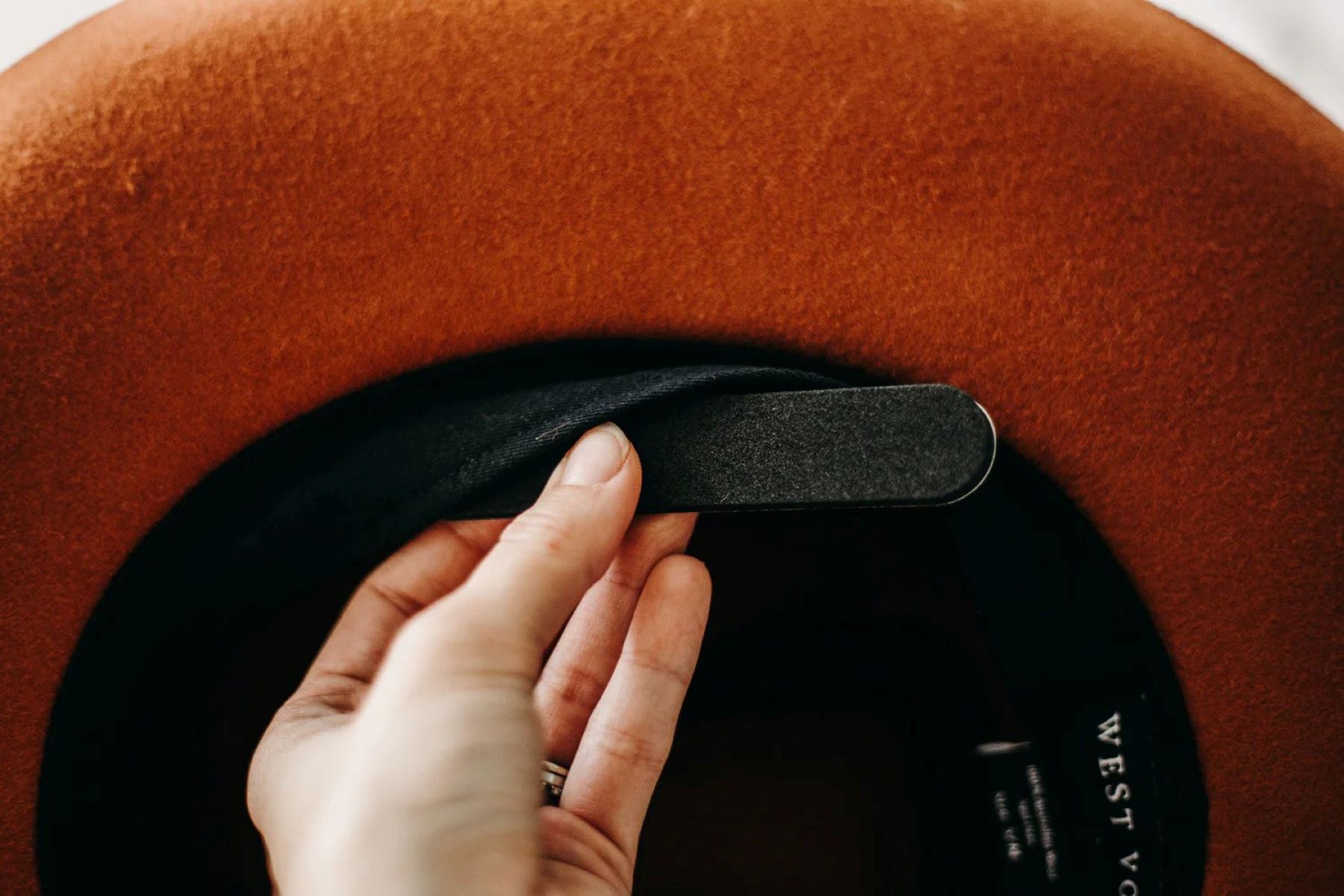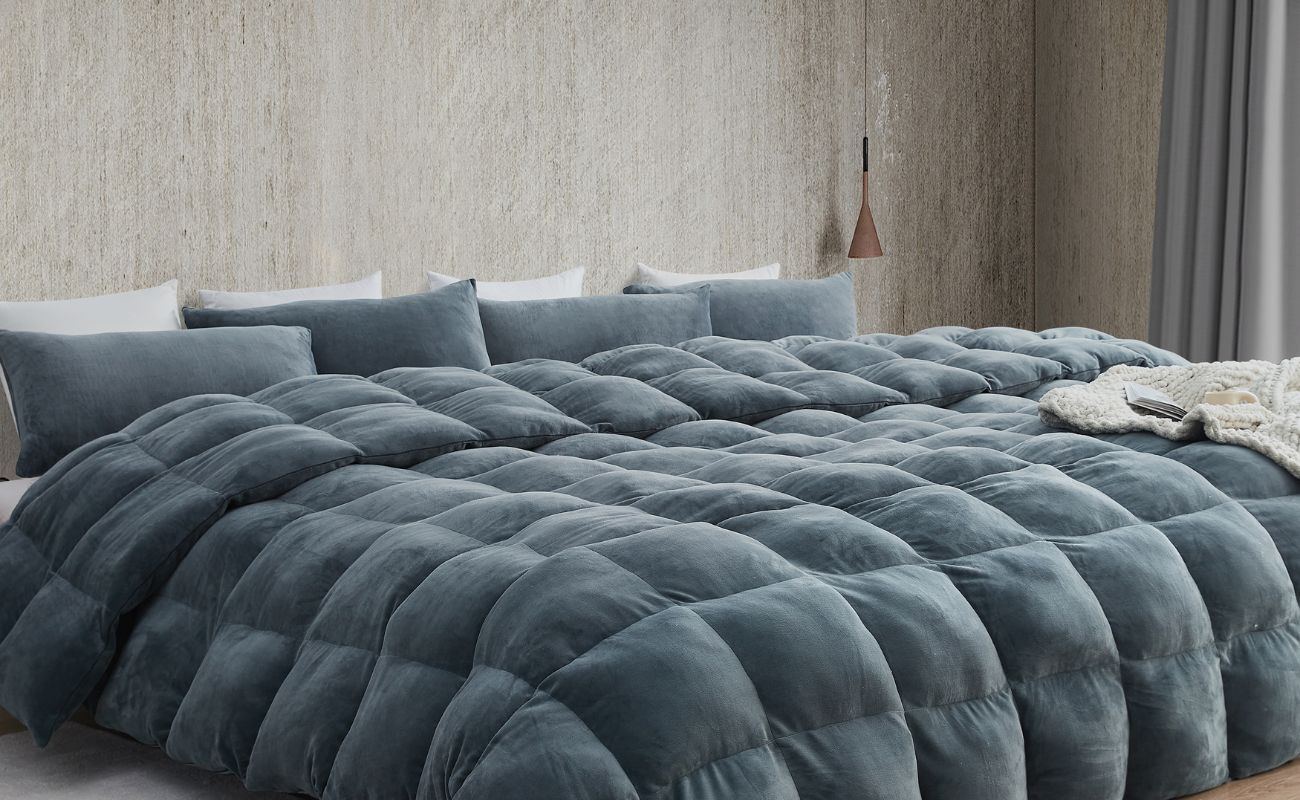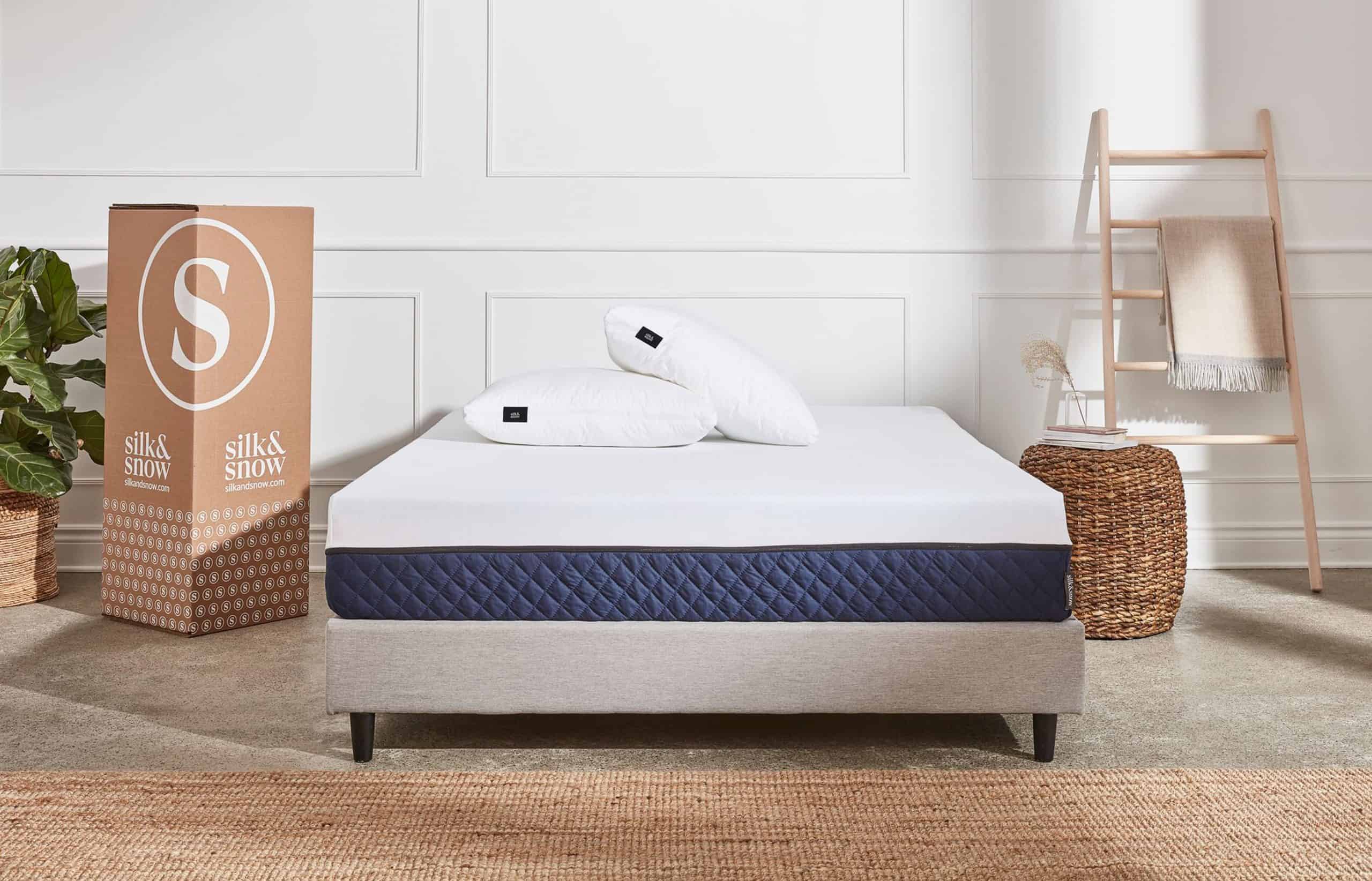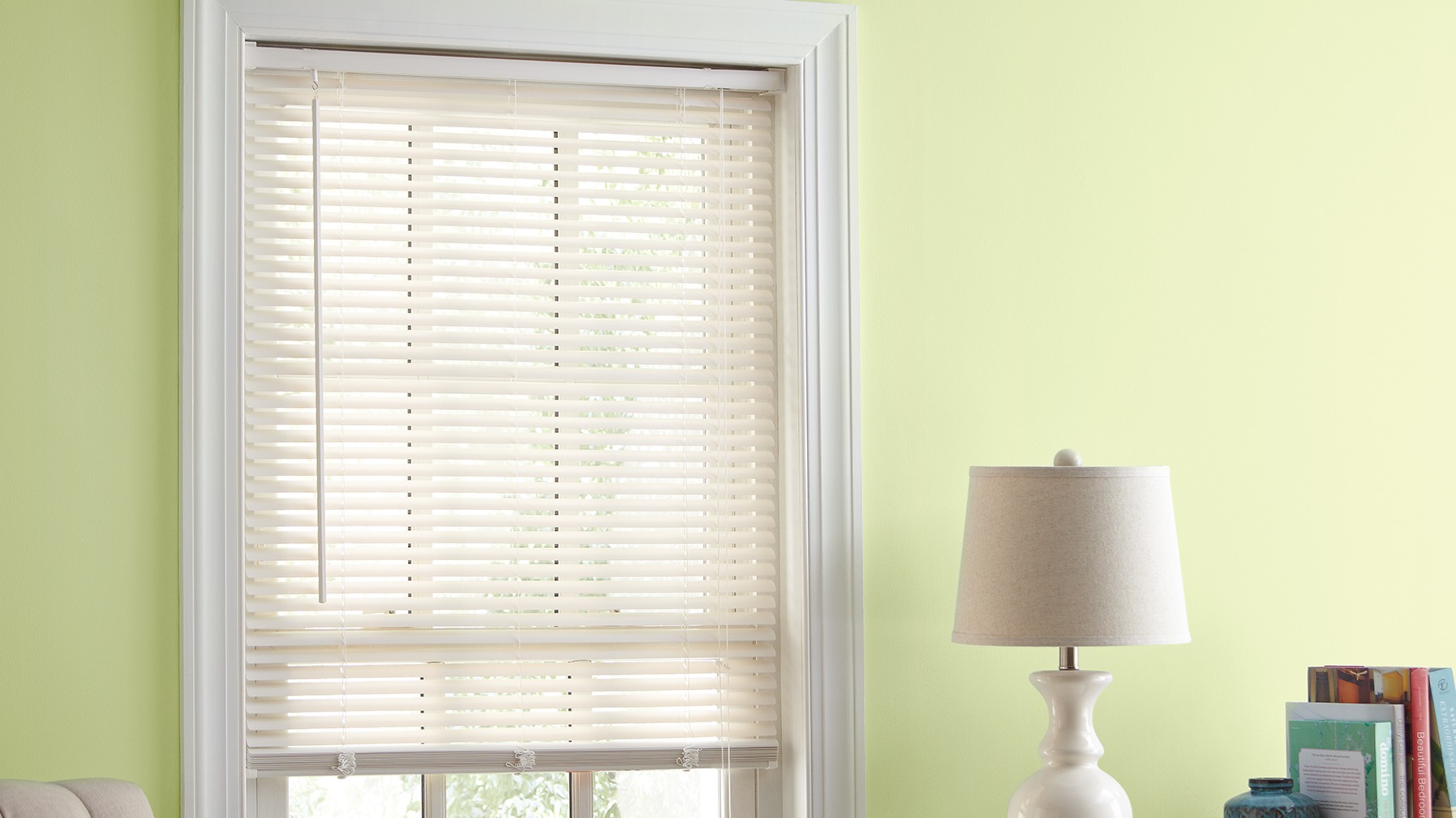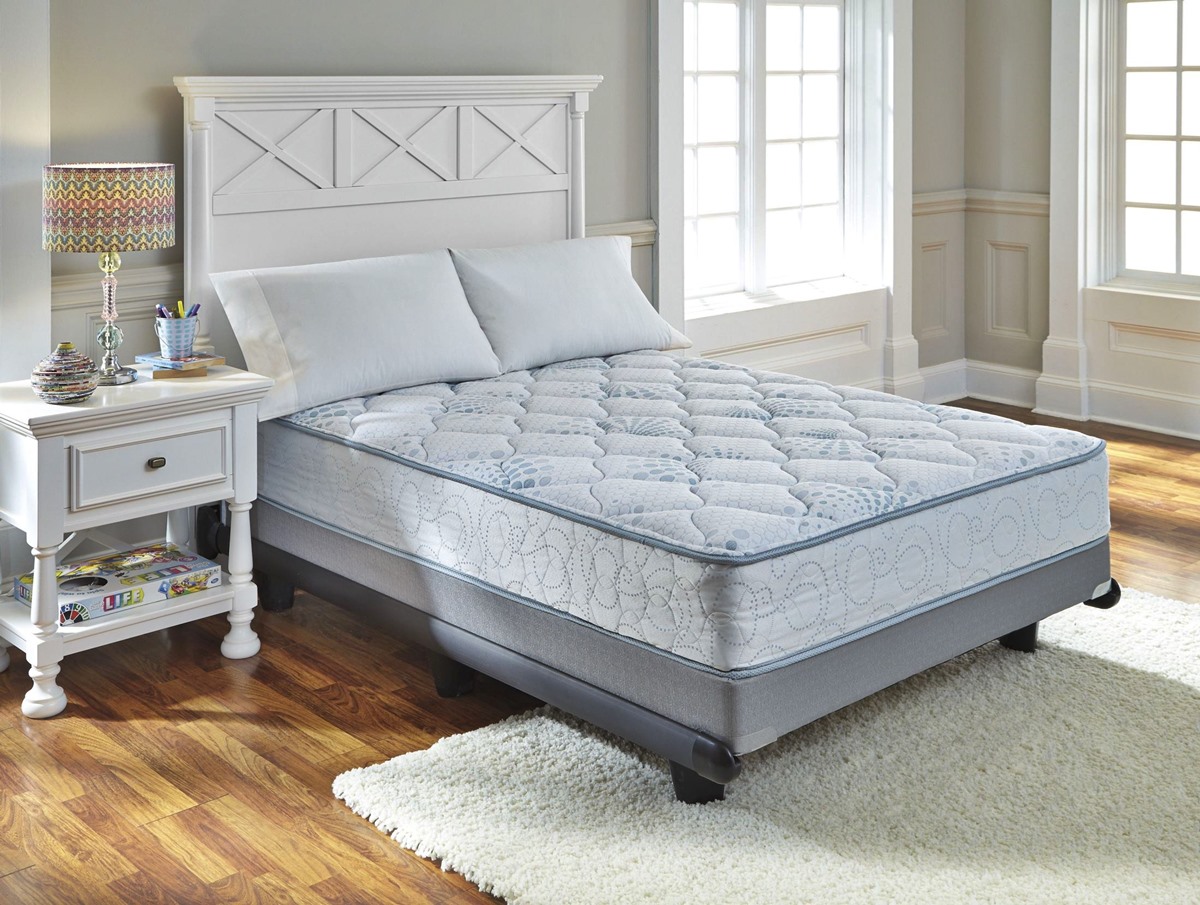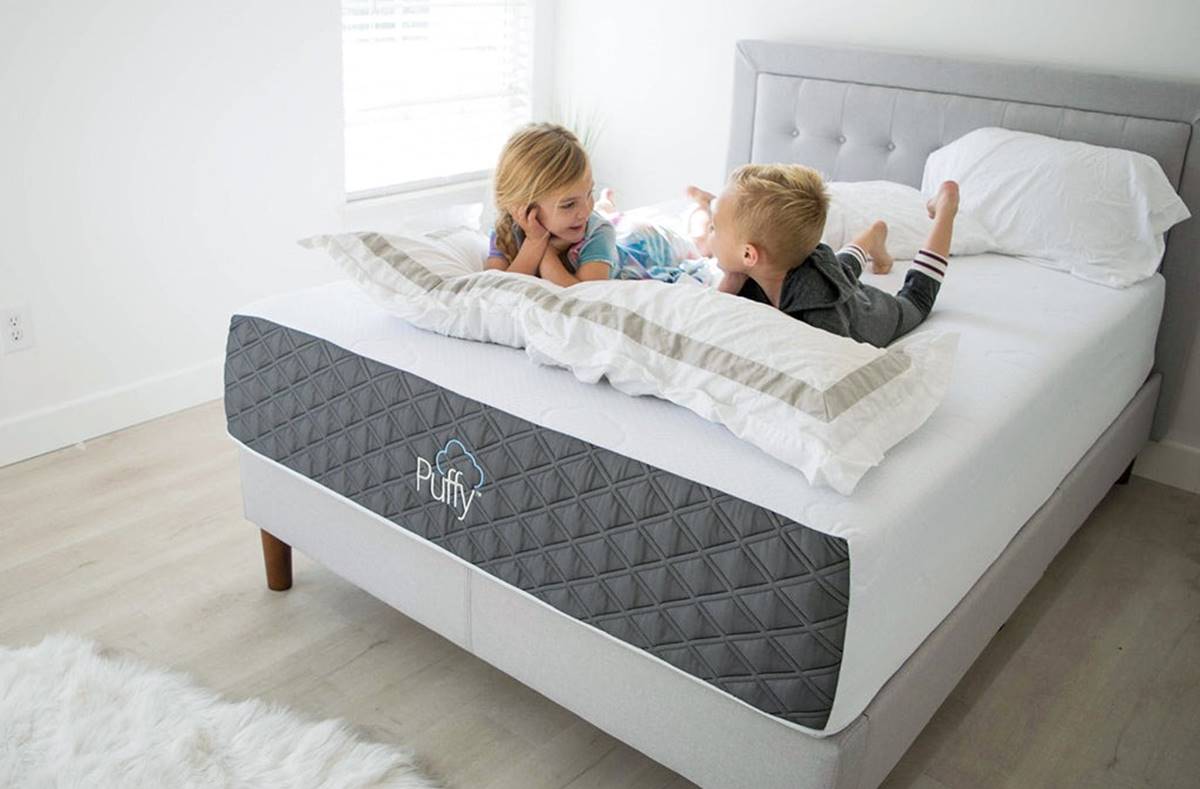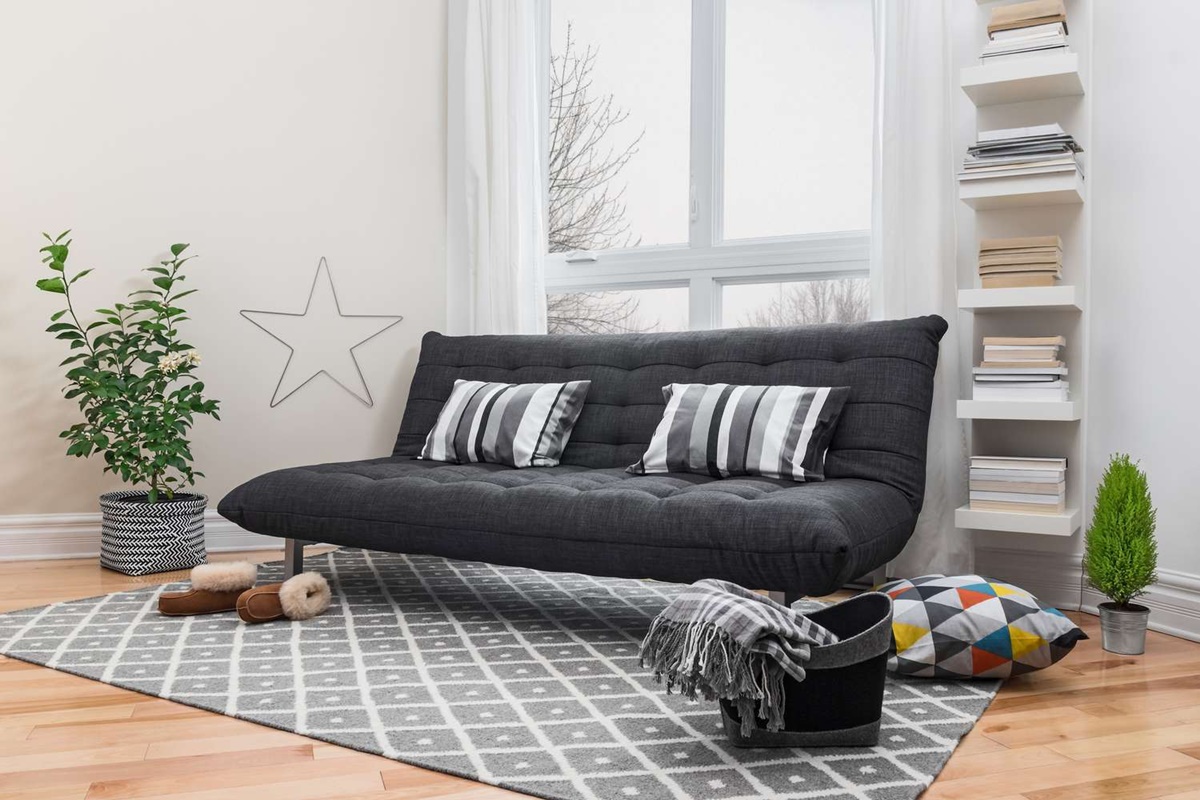Home>Furniture>Bedroom Furniture>How To Measure A Mattress Size
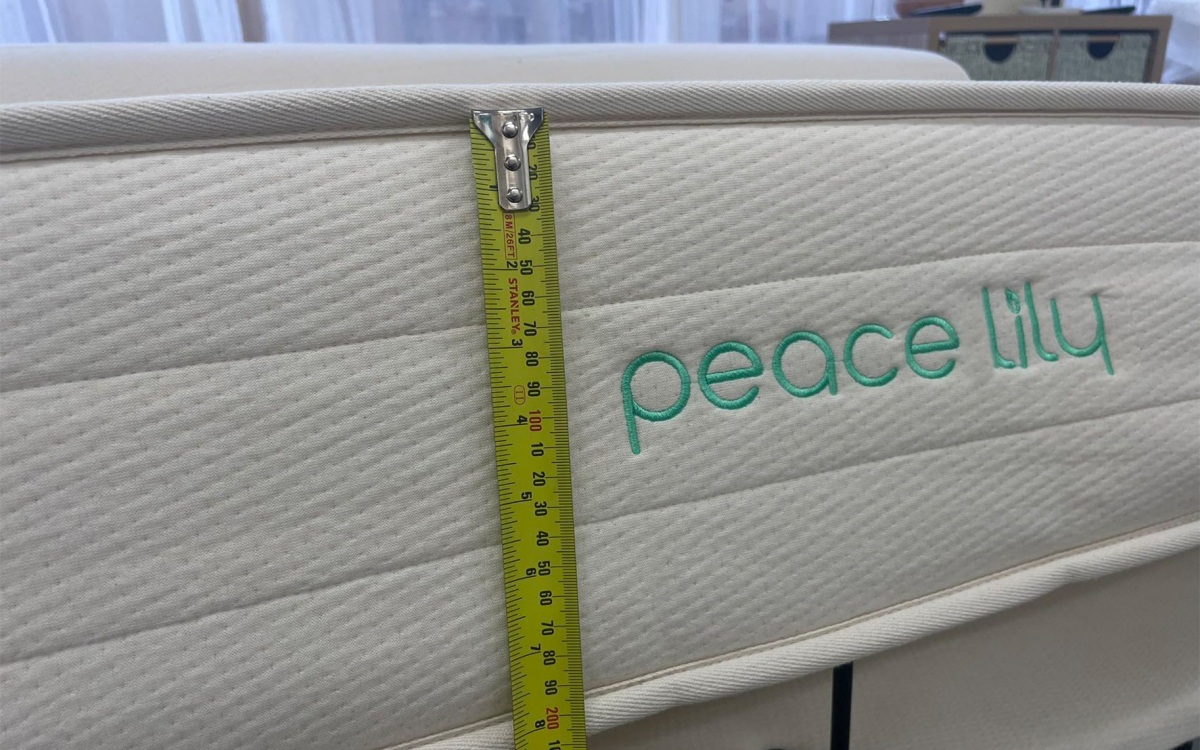

Bedroom Furniture
How To Measure A Mattress Size
Modified: October 20, 2024
Learn how to measure a mattress size accurately for your bedroom furniture. Find the perfect fit for your bed with our step-by-step guide.
(Many of the links in this article redirect to a specific reviewed product. Your purchase of these products through affiliate links helps to generate commission for Storables.com, at no extra cost. Learn more)
Introduction
Welcome to the ultimate guide on how to measure a mattress size. When it comes to buying new bedding, knowing the dimensions of your mattress is crucial to ensure a perfect fit. Whether you are looking to upgrade your bedroom furniture or simply replace your old mattress, accurate measurements will help you find the right size and avoid any headaches down the line.
In this article, we will explore the standard mattress sizes and guide you through the process of measuring your mattress correctly. We will also discuss the importance of understanding the dimensions and provide some useful tips to ensure accurate measurements. So, let’s dive in!
Key Takeaways:
- Ensure a perfect fit for your mattress by accurately measuring its length, width, and height. This will help you choose the right bedding, maximizing comfort and style in your bedroom.
- Understanding mattress dimensions is crucial for selecting the ideal bedding and creating a comfortable sleep environment. Consider personal preferences, sleeping habits, and bedroom aesthetics when choosing the perfect fit.
Read more: How To Cut Blinds To Size
Standard Mattress Sizes
Before we delve into the process of measuring your mattress, let’s first familiarize ourselves with the standard mattress sizes. These standardized dimensions are commonly used by manufacturers and retailers to ensure consistency in the bedding industry. By knowing these sizes, you can easily determine which category your mattress falls into.
Here are the most common standard mattress sizes:
- Twin: Also known as a single mattress, the dimensions for a twin mattress are typically 38 inches wide by 75 inches long.
- Twin XL: Slightly longer than the standard twin, a twin XL mattress measures 38 inches wide by 80 inches long. This size is commonly found in college dormitories.
- Full: Often referred to as a double mattress, a full-size mattress measures 54 inches wide by 75 inches long.
- Queen: The most popular mattress size among couples, a queen-size mattress measures 60 inches wide by 80 inches long.
- King: Offering ample space, a king-size mattress measures 76 inches wide by 80 inches long. This size is suitable for those who prefer extra room while sleeping.
- California King: The longest mattress available, a California king measures 72 inches wide by 84 inches long. It is ideal for taller individuals or those who enjoy stretching out.
It is essential to note that these are the standard sizes, and some mattress brands may offer variations or custom sizes. Now that you have a clear idea of the standard mattress dimensions, let’s move on to the next section on how to measure your mattress accurately.
Measuring a Mattress
When it comes to measuring your mattress, it’s important to be as precise as possible. Proper measurements will help you determine the exact size of your mattress and ensure that any bedding or accessories you purchase will fit snugly. To measure your mattress correctly, follow these steps:
- Clear the area around the mattress: Before you begin, make sure to remove any pillows, sheets, or other items from the bed to get an accurate measurement.
- Get a measuring tape: You will need a flexible measuring tape to measure the dimensions of your mattress. If you don’t have one, they are readily available at most hardware or home improvement stores.
- Measure the length: Starting at the head of the mattress, extend the measuring tape to the foot and record the length. Be sure to measure from the inside of the mattress, where the sleep surface is, and not the outer edges.
- Measure the width: Next, measure the width by extending the measuring tape from one side of the mattress to the other. Again, measure from the inside and not the outer edges.
- Measure the height: To determine the height of your mattress, position the measuring tape at the top edge and extend it downwards until you reach the bottom edge. This measurement will give you an idea of how thick or thin your mattress is.
Remember to double-check your measurements to ensure accuracy. It’s always a good idea to measure twice to be certain of the dimensions.
Understanding the measurements of your mattress is crucial when it comes to shopping for bedding. Proper measurements will save you time and money by ensuring that you purchase the correct size sheets, mattress protectors, and other accessories.
Now that you know how to measure your mattress accurately, let’s explore the importance of understanding mattress dimensions in the next section.
Understanding Dimensions
Understanding the dimensions of your mattress is essential for a variety of reasons. Not only does it help you determine the right size bedding, but it also plays a role in the overall aesthetic and functionality of your bedroom. Let’s take a closer look at each dimension and its significance:
Length: The length of the mattress refers to the measurement from the head to the foot. It is crucial to consider the length, especially if you are taller than average or prefer having extra legroom while sleeping. A mattress that is too short can lead to discomfort and restless nights, while a mattress that is too long may not fit properly in your bedroom space.
Width: The width of the mattress represents the measurement from one side to the other. It is essential to choose a width that accommodates your sleeping preferences and needs. If you sleep alone, a twin or full-size mattress may be sufficient. However, if you share your bed with a partner or pet, a queen or king-size mattress offers more space to ensure a comfortable and undisturbed sleep.
Height: The height, or thickness, of a mattress can vary significantly depending on the type and brand. While personal preference plays a role in choosing the height, it is essential to consider practicality as well. A mattress that is too high may make it difficult for individuals with mobility issues or shorter stature to get in and out of bed comfortably. On the other hand, a mattress that is too low may not provide adequate support or may not align with the height of your bed frame or headboard.
By understanding these dimensions, you can make informed decisions when purchasing a mattress and other bedroom furniture. Consider your personal preferences, body type, and sleeping habits to ensure that you choose a mattress that is the perfect fit for you.
Now that we have covered the importance of understanding dimensions, let’s move on to some tips for taking accurate measurements.
Understanding Dimensions: Length
The length of a mattress refers to the measurement from the head to the foot. It is an important dimension to consider when choosing a mattress that fits your sleep needs. Here are a few key points to keep in mind regarding the length of a mattress:
Personal Height: Your height plays a significant role in determining the optimal mattress length for you. If you are taller than average, you will likely want to opt for a mattress with a longer length to ensure your feet don’t hang off the edge. A mattress that is too short can lead to uncomfortable sleeping positions and restless nights, as your body won’t have enough space to fully stretch out and relax.
Bedroom Space: It’s important to consider the available space in your bedroom when determining the ideal mattress length. Measure the length of your bed frame or the space where you plan to place the mattress. Make sure there is enough room for the mattress to fit comfortably without obstructing walkways or other furniture. Taking accurate measurements will help you avoid any surprises when it comes time to place the mattress in your space.
Desired Sleep Surface: Consider the sleep surface you prefer. If you enjoy stretching out or tend to move around a lot during sleep, a longer mattress will provide you with the freedom and space to do so comfortably. However, if you prefer a more cozy and compact sleep surface, a shorter mattress may be more suitable for you.
Partner Sleeping: If you share your bed with a partner, their height should also be taken into consideration. Communication is key here – discuss and determine the mattress length that will accommodate both of your needs. Keep in mind that compromising on the length may result in a suboptimal sleep experience for one or both individuals.
Specialty Mattresses: It’s worth noting that certain specialty mattresses, such as those designed for taller individuals or adjustable beds, may offer extended length options. If you fall into these categories, explore the available options to ensure you find a mattress that suits your specific requirements.
By considering these factors, you can select a mattress with the appropriate length that promotes comfortable and restful sleep. Remember, a mattress should support your body from head to toe, allowing you to wake up feeling refreshed and rejuvenated.
Now that you have a better understanding of mattress length, let’s explore the next dimension – width!
When measuring a mattress, always use a tape measure to get the accurate length, width, and height. Measure from the top and bottom edges for consistency.
Read more: How To Measure Foot Size With Measuring Tape
Understanding Dimensions: Width
The width of a mattress refers to the measurement from one side to the other. It is an important dimension to consider when choosing a mattress that suits your sleep preferences and needs. Here are some key points to keep in mind regarding the width of a mattress:
Personal Space: The width of the mattress determines the amount of personal space you will have while sleeping. This is particularly significant if you sleep with a partner or share your bed with children or pets. If you prefer having more space to move around during sleep or have a tendency to sprawl out, a wider mattress can provide the comfort and freedom of movement you desire. On the other hand, if you prefer a more cozy and snug sleeping experience, a narrower mattress may be more suitable.
Sleeping Accommodations: Consider your sleeping habits and preferences when it comes to mattress width. If you tend to sleep close to the edge of the bed, a wider mattress can prevent the feeling of potential “falling off” and provide you with more sleeping surface area. It is also important to consider any sleeping positions or postures that require extra space. For example, if you are a side sleeper and prefer bringing your knees up towards your chest, a wider mattress can accommodate this comfortably.
Bedroom Space: Determine the available space in your bedroom and make sure the width of the mattress allows for easy movement and access around the room. Take measurements of the bed frame or the area where the mattress will be placed. Be mindful of any other furniture or objects in the room that may affect the practicality of a wider mattress.
Sleeping Partners: If you share your bed with a partner, it is crucial to consider their sleep needs as well. Communication and compromise are essential when it comes to selecting the appropriate mattress width. Discuss preferences and ensure that both individuals are satisfied with the amount of personal space provided by the mattress.
Bedroom Aesthetics: The width of the mattress can also impact the overall look and feel of your bedroom. A wider mattress may create a more substantial and luxurious appearance, while a narrower mattress can contribute to a minimalistic or space-saving vibe. Consider your desired bedroom aesthetics and how the mattress width fits into the overall design and theme.
By taking these factors into account, you can select a mattress with the optimal width that promotes restful sleep and meets your lifestyle needs. Remember, investing in a comfortable mattress that suits your personal space requirements is essential for achieving quality sleep.
Now that we have explored the dimension of width, let’s move on to the final dimension – height!
Understanding Dimensions: Height
The height, or thickness, of a mattress refers to its measurement from the top to the bottom. While often overlooked, the height of a mattress can have a significant impact on your overall sleep experience and bedroom aesthetics. Here are some key points to consider when it comes to the height of a mattress:
Comfort and Support: The height of a mattress can play a role in its comfort and support levels. A thicker mattress may provide additional cushioning and contouring, which can be beneficial for individuals who prefer a softer sleep surface. Conversely, a thinner mattress may offer a firmer feel, which can be advantageous for those who require more support or have specific orthopedic needs. Consider your personal comfort preferences and any health-related considerations when selecting the appropriate height for your mattress.
Bed Frame Compatibility: It’s important to ensure that the height of your mattress is compatible with your bed frame or foundation. Measure the height of your bed frame or the space where the mattress will sit to determine the maximum height you can accommodate. A mattress that is too tall for your bed frame may not fit properly or may protrude excessively, affecting the overall stability and aesthetics of your bed setup.
Bedding and Accessories: The height of your mattress also impacts the selection of bedding and accessories. Thicker mattresses may require deep-pocketed fitted sheets to ensure a proper fit. Additionally, consider whether your desired mattress height allows for the use of mattress protectors, mattress toppers, or bed skirts without compromising the overall look and functionality.
Bedroom Visuals: The height of your mattress can contribute to the overall aesthetics of your bedroom. A higher mattress can create a more substantial and luxurious appearance, while a lower mattress can lend a more minimalist and sleek vibe. Consider your desired bedroom visuals and how the mattress height aligns with your style and design preferences.
Accessibility: The height of your mattress can also impact its accessibility, especially for individuals with limited mobility or physical challenges. A mattress that is too high may be difficult to climb into or out of, while a mattress that is too low may make it challenging for some individuals to rise from a seated position. Consider your specific needs or the needs of any users when determining the ideal mattress height.
By carefully considering these factors, you can choose a mattress with the optimal height that provides the desired comfort, support, and aesthetics. Remember, a mattress that aligns with your needs and preferences enhances your sleep quality and overall well-being.
Now that we have covered all the dimensions of a mattress, let’s move on to some essential tips for taking accurate measurements.
Tips for Accurate Measurements
When measuring your mattress, it’s important to ensure precise and accurate measurements to find the perfect fit for your bedding and accessories. Here are some helpful tips to help you take accurate measurements:
Use a Flexible Measuring Tape: Invest in a flexible measuring tape specifically designed for measuring dimensions. Avoid using a rigid ruler or tape measure, as it may not provide accurate measurements and can result in incorrect sizing.
Clear the Area: Before measuring, clear the mattress area of any pillows, sheets, or additional items. This ensures that you measure the mattress’s true dimensions without any obstructions.
Measure Twice: Double-check your measurements to ensure accuracy. Measure the length, width, and height of your mattress twice to confirm the numbers match. This helps prevent any errors in measuring and ensures consistent results.
Measure the Inside, Not the Outside: When measuring the length and width of the mattress, make sure to measure from the inside edges. Avoid measuring the outer edges, as they may include any additional mattress padding, decorative borders, or stitching that can affect the actual dimensions.
Be Precise: When measuring, be as precise as possible. Make sure the measuring tape is straight and taut, following the contours and edges of the mattress. Round measurements to the nearest inch or centimeter for accuracy.
Record Correct Units: Pay attention to the units used in your measurements, whether it’s inches, centimeters, or another metric system. Make sure you record and communicate measurements consistently, especially when comparing different mattress options or purchasing bedding accessories.
Consider Mattress Expansion: Keep in mind that some mattresses may expand or compress slightly over time. If your mattress has a memory foam or hybrid construction, it may have an initial break-in period where it adjusts to its proper dimensions. Allow for this potential expansion or compression when selecting bedding or evaluating the fit of your mattress within a bed frame or headboard.
Consult Manufacturer Guidelines: If you have access to the mattress manufacturer’s guidelines or specifications, follow their recommended measuring techniques. Some manufacturers may have specific instructions or considerations for measuring their mattresses correctly.
By following these tips, you can ensure accurate measurements of your mattress, enabling you to find the perfect bedding and accessories that fit seamlessly and enhance your sleep environment.
Now that you are equipped with accurate measurements, let’s move on to the importance of choosing the right bedding for your mattress.
Choosing the Right Bedding
Now that you have accurate measurements of your mattress, it’s time to select the right bedding that fits perfectly and enhances your sleep experience. Here are some essential factors to consider when choosing the right bedding:
Fitted Sheets: Start by finding fitted sheets that match the dimensions of your mattress. Look for sheets labeled with the specific mattress size you have, such as twin, full, queen, king, or California king. Make sure the fitted sheets have deep pockets if your mattress is thicker than average to ensure a secure and snug fit.
Flat Sheets: Flat sheets are typically universal in size and fit most mattresses. However, if you have an extra-long twin or California king mattress, you may need to look for flat sheets designed specifically for those sizes. Consider the material and thread count of the flat sheet for desired comfort and breathability.
Pillowcases: Pillowcases are often included with sheet sets, but if you are purchasing them separately, check that they match the dimensions of your pillows. Pillowcases come in standard, queen, and king sizes to fit different pillow sizes accordingly.
Mattress Protectors: A mattress protector is essential for keeping your mattress clean and extending its lifespan. Look for a mattress protector that corresponds to the dimensions of your mattress. Keep in mind that some mattress protectors are designed to accommodate different thicknesses, so check the maximum depth allowed.
Blankets and Comforters: When selecting blankets or comforters, consider the dimensions that will provide adequate coverage for your mattress. Twin, full, queen, king, and California king sizes are available for blankets and comforters. Choose a size that matches or exceeds the width and length of your mattress to ensure optimal coverage.
Bed Skirts: If you desire to add a bed skirt to your bedding ensemble for a polished look, make sure to choose one that corresponds to the dimensions of your mattress. Bed skirts typically come in sizes that match the standard mattress dimensions, or they can be adjustable to accommodate various mattress thicknesses.
Pillows and Pillow Shams: Consider the size of your pillow when choosing pillow shams or decorative pillowcases. Standard, queen, and king sizes are available to fit different pillow dimensions. Ensure that the pillowcases match the size of your pillows for a cohesive and stylish look.
When selecting bedding, keep in mind that the overall fit and appearance contribute to the overall aesthetic of your bedroom. Choosing bedding that fits properly and complements your bedroom decor will not only provide comfort but also enhance the overall ambiance of the space.
Now that you have all the information you need to choose the right bedding, let’s wrap up this comprehensive guide on measuring mattress sizes.
Read more: What Is The Standard Window Size For Blinds
Conclusion
Congratulations! You are now equipped with the knowledge and understanding to measure a mattress size accurately and choose the right bedding. By following the steps outlined in this guide, you can ensure a perfect fit for your mattress and create a comfortable and stylish sleep environment.
Remember, knowing the dimensions of your mattress is essential when purchasing bedding and accessories. Whether you’re selecting fitted sheets, flat sheets, mattress protectors, or blankets, choosing the correct size will ensure a snug and secure fit, maximizing your comfort and ease of use.
When measuring your mattress, use a flexible tape measure, measure twice to confirm accuracy, and record the measurements in the correct units. And don’t forget to consider the length, width, and height of your mattress, as well as any special considerations such as personal height, sleeping arrangements, and bedroom space.
Once you have accurate measurements, explore the wide range of bedding options available in various sizes. Consider the fit, materials, and design that align with your preferences and bedroom aesthetics. With the right bedding, you can transform your sleep experience into a restful and rejuvenating one.
So, whether you’re upgrading your mattress, replacing old bedding, or simply looking to revamp your bedroom, taking the time to measure your mattress accurately and choose the right bedding will make all the difference. Enjoy the process of creating your sleep sanctuary and relish in the comfort and style that perfectly fit bedding brings.
Now, armed with this comprehensive guide, go forth and create the bedroom of your dreams! Sweet dreams and restful nights await!
Frequently Asked Questions about How To Measure A Mattress Size
Was this page helpful?
At Storables.com, we guarantee accurate and reliable information. Our content, validated by Expert Board Contributors, is crafted following stringent Editorial Policies. We're committed to providing you with well-researched, expert-backed insights for all your informational needs.


